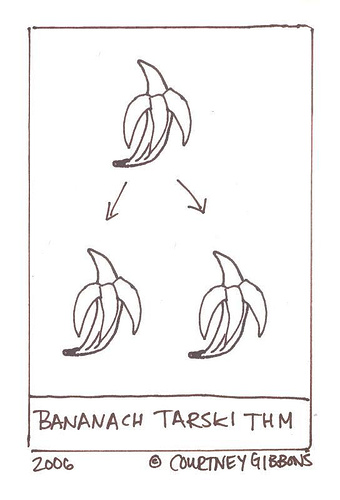
Everyone knows those three-dimensional puzzles: a cube, ball, pyramide, zeppelin etcetera, that you have to take apart (not too difficult) and then put back together again. At the beginning of the last century the mathematicians Hausdorff, Banach and Tarski came up with a few puzzles that will give you more headaches than those standard wooden things.
The first puzzle was made from the surface of a ball with radius 1 (a ping-pong ball, say): you can divide that surface in to ten pieces P1, ..., P10 in such a way that P1, P2, P3 and P4 can be reassembled to a ping-pong ball of radius 1 as can the remaining six pieces! That is a puzzle with two solutions.
The second puzzle is similar, but with a solid ball of radius 1: you can divide it into forty pieces in such a way that you, again, get a puzzle with two solutions. You can reassemble the pieces into the original ball of course but you can create a massive ball out of sixteen of the pieces and another one out of the other twenty-four pieces. Out of one ball of radius 1 you can create two balls of the same radius.